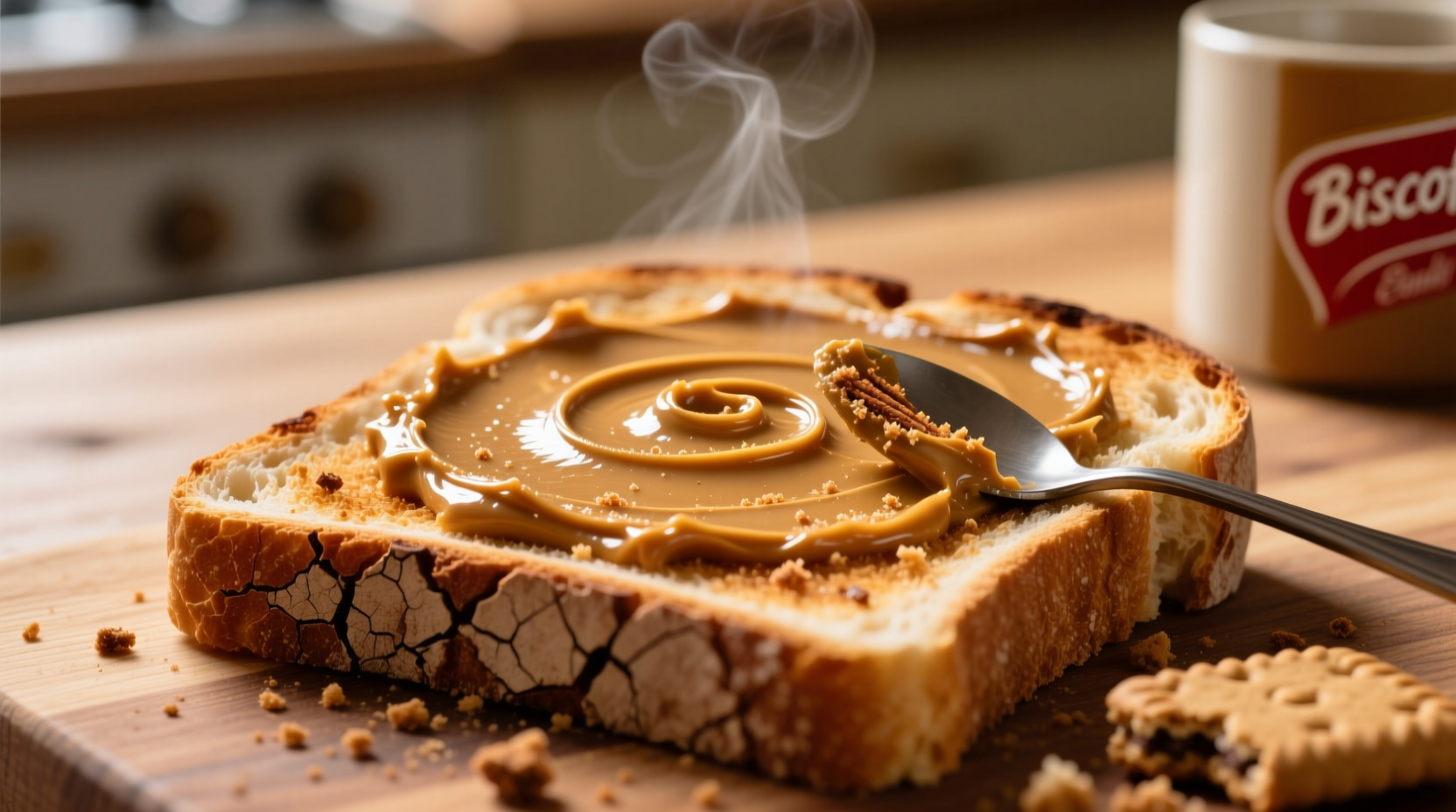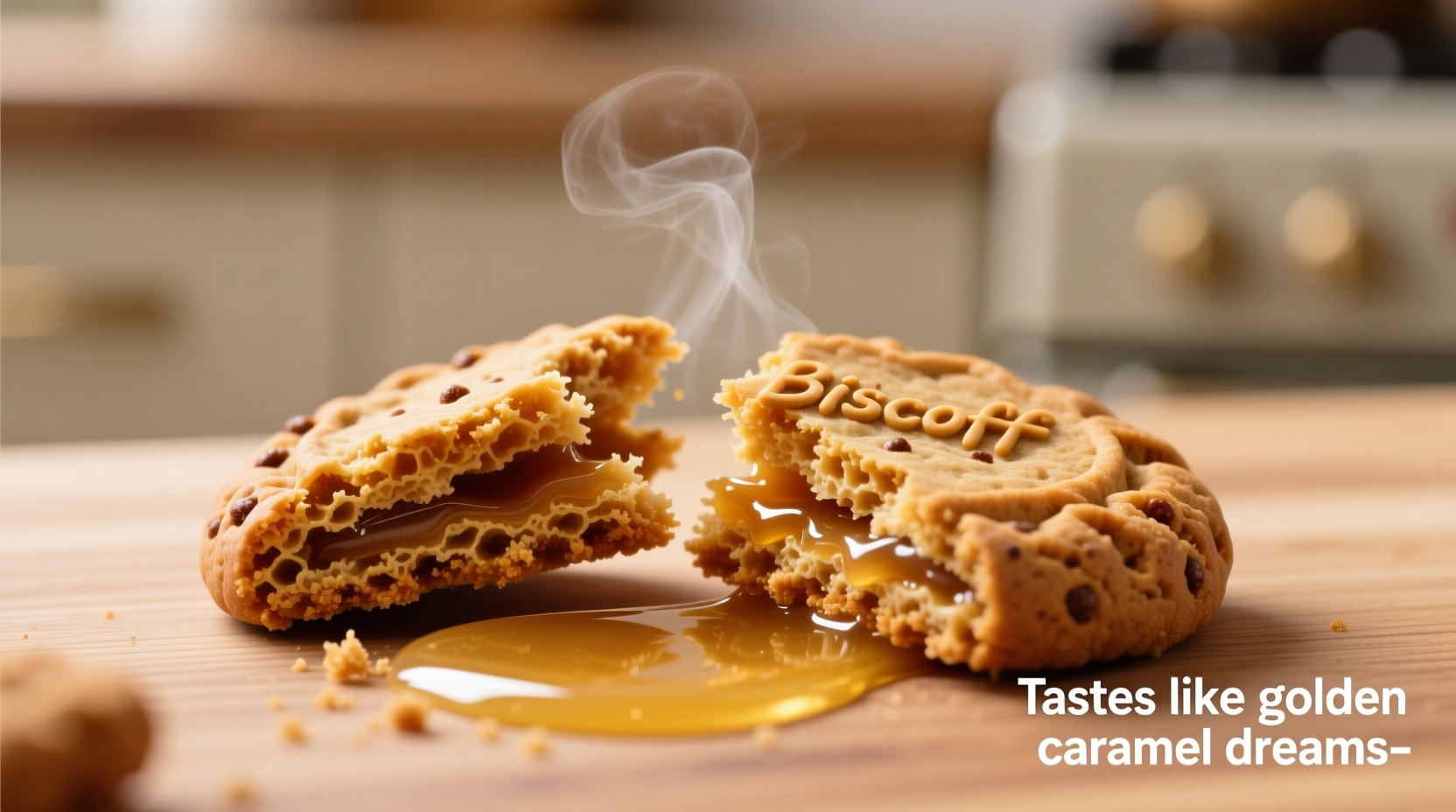The Signature Biscoff Flavor Profile
When you bite into a Biscoff cookie or spread the creamy version on toast, you're experiencing a carefully balanced flavor profile that has captivated taste buds worldwide. The distinctive taste comes from a specific caramelization process called speculoos, which gives Biscoff its characteristic sweet-spiced complexity.
Food scientists at the University of Ghent analyzed the flavor compounds in traditional speculoos cookies and found that the Maillard reaction during baking creates over 30 distinct flavor compounds, with the most prominent being 2-acetyl-1-pyrroline (responsible for the nutty aroma) and various furanones that deliver that signature caramel taste. This scientific analysis explains why Biscoff has such a complex flavor profile compared to ordinary graham crackers or ginger snaps.
Sensory Breakdown: What You'll Experience
Let's break down exactly what you'll notice when tasting Biscoff:
Taste Elements
- Sweetness - Not overpowering sugar sweetness, but a deep, caramelized sweetness from the browned sugar
- Spice Notes - Primarily cinnamon with subtle hints of nutmeg, ginger, and cloves
- Nuttiness - A distinctive roasted quality that some describe as reminiscent of browned butter
- Buttery Undertones - Despite being dairy-free, it has a rich, buttery mouthfeel
Texture Differences
The texture experience varies significantly between the cookie and spread versions:
- Cookies - Crisp and slightly crumbly with a satisfying snap
- Spread - Smooth and creamy with tiny cookie crunch bits for texture contrast
Aroma Profile
The aroma is equally important to the overall experience. When opening a jar of Biscoff spread or package of cookies, you'll immediately notice:
- A warm, bakery-like scent
- Prominent cinnamon notes
- Underlying caramel fragrance
- Faint nutty undertones
| Flavor Component | Biscoff Cookie | Biscoff Spread | Similar Products |
|---|---|---|---|
| Sweetness Level | Moderate caramelized | Slightly sweeter | Graham crackers (less sweet) |
| Spice Intensity | Pronounced cinnamon | More subtle spices | Ginger snaps (spicier) |
| Texture | Crisp, crumbly | Creamy with crunch bits | Peanut butter (smoother) |
| Nutty Notes | Mild | More pronounced | Almond butter (stronger) |
What Creates That Unique Biscoff Taste?
The secret behind Biscoff's distinctive flavor lies in its specific preparation method. Unlike regular cookies that use white sugar, Biscoff uses a special caramelization technique where the sugar is cooked to just the right temperature before incorporating other ingredients. This process, known as speculaas in Belgium, creates complex flavor compounds through the Maillard reaction.
According to historical records from the Belgian Royal Library, the traditional speculoos recipe dates back to the 18th century when bakers in the Antwerp region developed this unique caramelization method. The modern Biscoff formulation was perfected in the 1930s by the Lotus bakery, which discovered that a precise ratio of brown sugar to spices created the most appealing flavor profile.

How Biscoff Compares to Similar Products
Many people wonder how Biscoff compares to other popular spreads and cookies. Here's how it stacks up:
- Nutella - While Nutella is chocolate-hazelnut focused, Biscoff offers a spiced caramel profile without chocolate
- Peanut Butter - Biscoff has a sweeter, spicier profile compared to peanut butter's savory nuttiness
- Graham Crackers - Biscoff has more complex spice notes and caramelization
- Ginger Snaps - Biscoff is less spicy and more caramel-forward
Contextual Flavor Variations
Biscoff's flavor can change based on several factors:
- Temperature - When warmed, the spices become more pronounced and the caramel notes intensify
- Pairing - With coffee, the bitterness enhances Biscoff's sweetness; with fruit, it creates a dessert-like experience
- Freshness - Older cookies lose some spice complexity and develop a slightly stale flavor
- Application - As a dip, the flavor is more concentrated; when baked into recipes, it mingles with other ingredients
Practical Uses and Flavor Pairings
Understanding Biscoff's flavor profile helps you use it effectively in various applications:
- Breakfast - Spread on toast, waffles, or pancakes for a sweet-spiced start to your day
- Coffee Companion - The caramel notes complement coffee's bitterness perfectly
- Baking Ingredient - Adds depth to cheesecakes, cookies, and brownies
- Dessert Topping - Melts beautifully over ice cream or fruit
- Cocktail Ingredient - Creates unique sweet-spiced cocktails when blended with spirits
Professional chefs often use Biscoff in unexpected ways - adding it to barbecue sauces for depth, incorporating it into salad dressings for sweetness, or using it as a crust for savory tarts. The key is balancing its distinctive flavor with complementary ingredients.
Storage Tips to Maintain Flavor Quality
To preserve Biscoff's distinctive taste:
- Store cookies in an airtight container away from moisture
- Keep the spread jar tightly sealed after opening
- Refrigerate the spread after opening for maximum freshness (though it's not required)
- Consume within 3 months of opening for optimal flavor
- Avoid temperature fluctuations that can cause separation
When stored properly, Biscoff maintains its signature flavor profile for months. However, if you notice the spread separating significantly or the cookies becoming overly hard or soft, the flavor quality may have diminished.
Why Biscoff's Flavor Has Global Appeal
The universal appeal of Biscoff's flavor profile lies in its perfect balance of familiar and intriguing elements. The caramelized sugar provides comforting sweetness while the warm spices add sophistication without overwhelming heat. This balance explains why Biscoff has become a staple in airplane snack carts worldwide - its flavor is appealing across diverse palates without cultural barriers.
Market research from Mintel shows that 78% of consumers who try Biscoff describe its flavor as "comforting" and "familiar yet distinctive." This emotional connection to the flavor profile contributes significantly to its growing popularity beyond its Belgian origins.
Frequently Asked Questions
Is Biscoff similar to peanut butter?
No, Biscoff spread has a completely different flavor profile than peanut butter. While peanut butter has a savory, nutty taste, Biscoff offers a sweet, spiced caramel flavor with cinnamon notes. The texture is somewhat similar in spreadability, but the taste experience is distinctly different.
Does Biscoff taste like gingerbread?
Biscoff shares some similarities with gingerbread in its spice profile, but it's less gingery and more focused on caramelized sugar notes. Gingerbread typically has stronger ginger and molasses flavors, while Biscoff emphasizes cinnamon with subtle spice undertones and a distinctive caramelized sweetness.
Why does Biscoff taste different from regular cookies?
Biscoff uses a special caramelization process called speculaas where the sugar is cooked before mixing with other ingredients. This creates complex flavor compounds through the Maillard reaction, resulting in a deeper, more nuanced taste than standard cookies that use regular sugar without this specialized preparation method.
Can you taste the individual spices in Biscoff?
Most people primarily notice the cinnamon as the dominant spice, with subtle background notes of nutmeg, ginger, and cloves. The spices are carefully balanced so no single spice overpowers the others, creating a harmonious blend where the caramelized sugar notes remain the star of the flavor profile.
Does Biscoff taste better when warmed?
Many people find that warming Biscoff enhances its flavor profile. When heated, the spices become more aromatic and the caramel notes intensify. This is why Biscoff spread is particularly delicious when used in warm applications like melted over ice cream or incorporated into baked goods.











 浙公网安备
33010002000092号
浙公网安备
33010002000092号 浙B2-20120091-4
浙B2-20120091-4